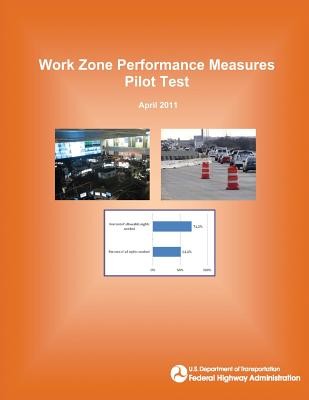
- We will send in 10–14 business days.
- Author: Federal Highway Administration
- Publisher: CreateSpace Independent Publishing Platform
- Year: 2015
- Pages: 130
- ISBN-10: 1508651264
- ISBN-13: 9781508651260
- Format: 21.6 x 27.9 x 0.7 cm, softcover
- Language: English
- SAVE -10% with code: EXTRA
Work Zone Performance Measures Pilot Test (e-book) (used book) | bookbook.eu
Reviews
Description
Currently, a well-defined and validated set of metrics to use in monitoring work zone performance do not exist. This pilot test was conducted to assist state DOTs in identifying what work zone performance measures can and should be targeted, what data they will need to collect to compute those measures, and what methods exist to obtain that data. Work zone activity and traffic data from five work zone projects were gathered and analyzed. Multiple data sources and collection methods were examined and utilized to the extent available at each project. These sources were field crew personnel manually documenting queue presence, length, and duration; traffic surveillance data from a transportation management center or from portable work zone ITS; and third-party probe vehicle data (in this test, large truck speed data obtained via the FHWA Office of Freight Management). The results of the pilot test indicate that manual documentation of queuing by field personnel, and the use of permanent or portable traffic sensor data can be used effectively to measure work zone impacts, given that information as to the time and location of work activities is known. Probe vehicle data is also believed to be a viable source of data, but sample size issues did limit is applicability in this pilot test. Average and maximum queue lengths and duration, duration of queues exceeding pre-determined thresholds, vehicle exposure to queues, and vehicle delays when queues are present were among the several performance measures tested and demonstrated as viable indicators of work zone mobility impacts. A number of lessons learned through this pilot test effort are also included in the report.
EXTRA 10 % discount with code: EXTRA
The promotion ends in 20d.04:14:23
The discount code is valid when purchasing from 10 €. Discounts do not stack.
- Author: Federal Highway Administration
- Publisher: CreateSpace Independent Publishing Platform
- Year: 2015
- Pages: 130
- ISBN-10: 1508651264
- ISBN-13: 9781508651260
- Format: 21.6 x 27.9 x 0.7 cm, softcover
- Language: English English
Currently, a well-defined and validated set of metrics to use in monitoring work zone performance do not exist. This pilot test was conducted to assist state DOTs in identifying what work zone performance measures can and should be targeted, what data they will need to collect to compute those measures, and what methods exist to obtain that data. Work zone activity and traffic data from five work zone projects were gathered and analyzed. Multiple data sources and collection methods were examined and utilized to the extent available at each project. These sources were field crew personnel manually documenting queue presence, length, and duration; traffic surveillance data from a transportation management center or from portable work zone ITS; and third-party probe vehicle data (in this test, large truck speed data obtained via the FHWA Office of Freight Management). The results of the pilot test indicate that manual documentation of queuing by field personnel, and the use of permanent or portable traffic sensor data can be used effectively to measure work zone impacts, given that information as to the time and location of work activities is known. Probe vehicle data is also believed to be a viable source of data, but sample size issues did limit is applicability in this pilot test. Average and maximum queue lengths and duration, duration of queues exceeding pre-determined thresholds, vehicle exposure to queues, and vehicle delays when queues are present were among the several performance measures tested and demonstrated as viable indicators of work zone mobility impacts. A number of lessons learned through this pilot test effort are also included in the report.


Reviews